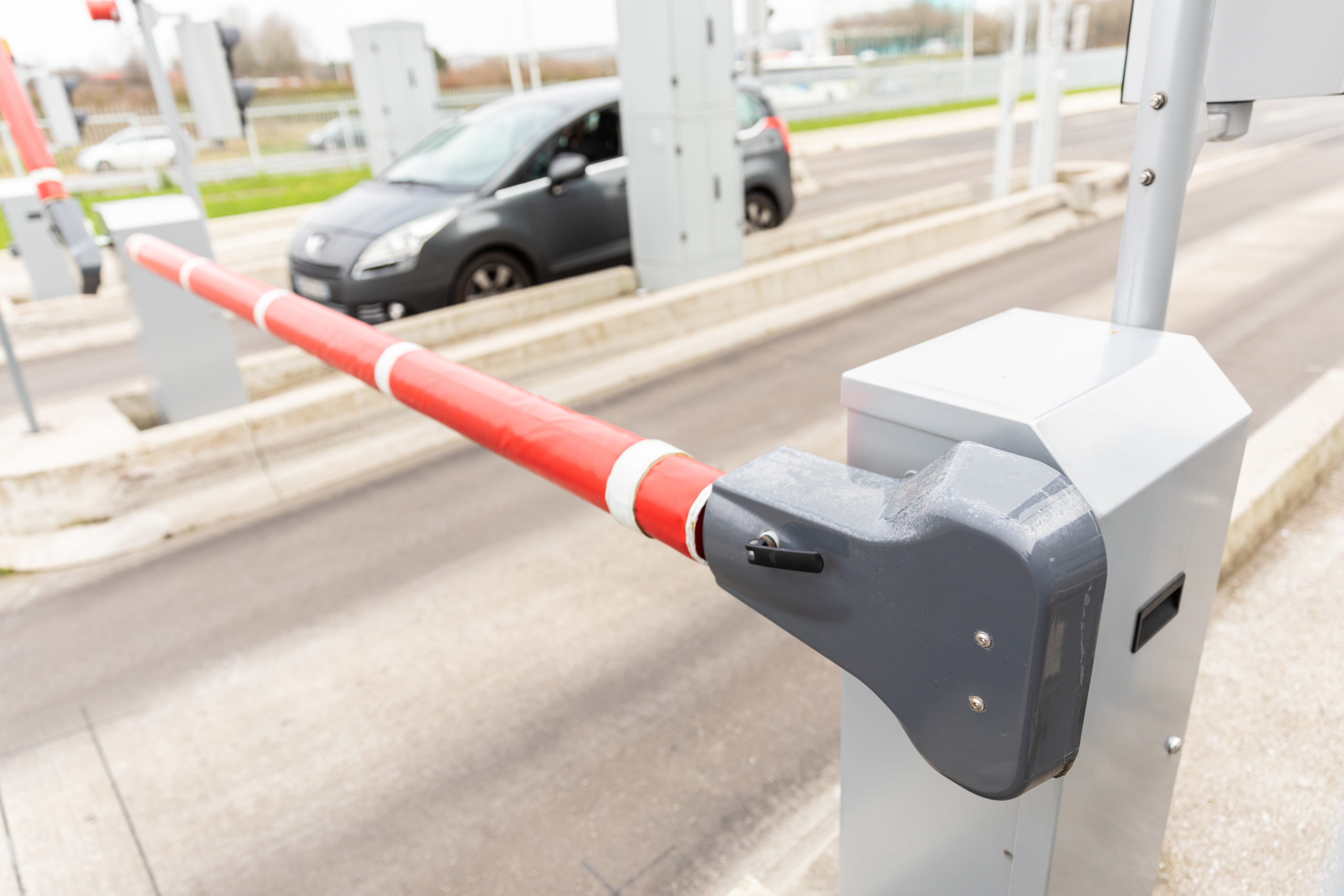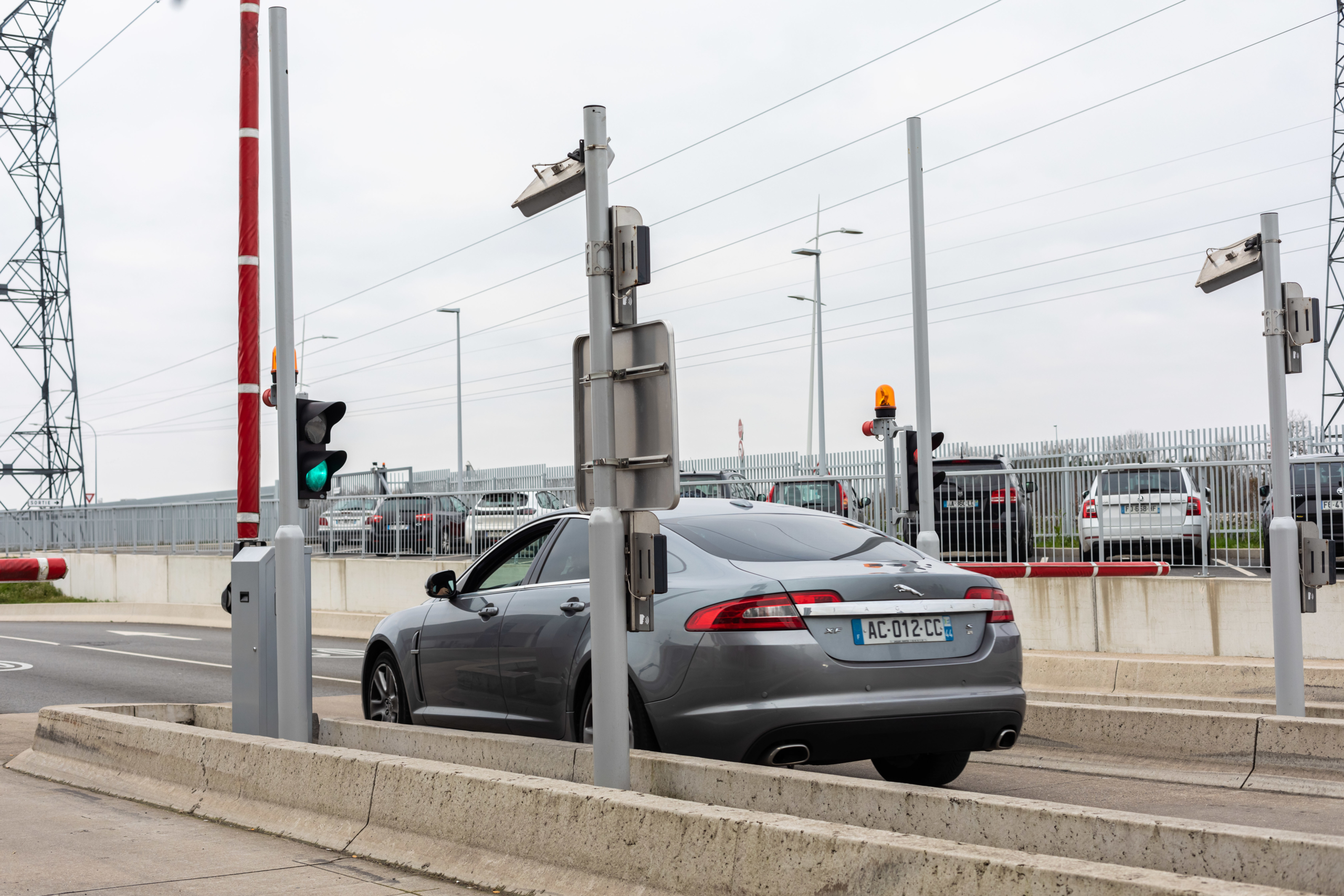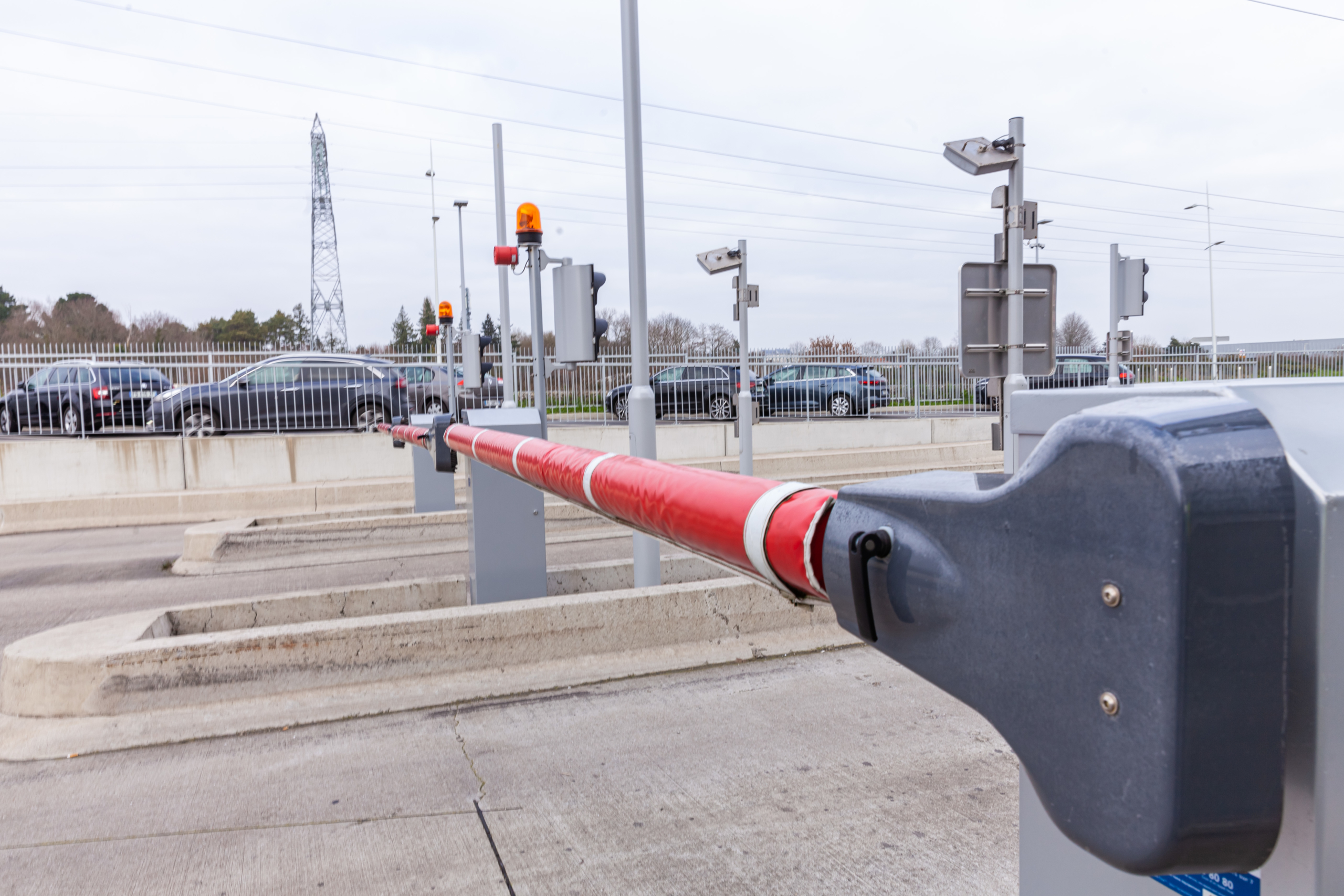PATENTED SWING-OFF AND AUTOMATIC RE-HINGING DEVICE
Thanks to the patented swing-off and automatic rehinging device for toll barriers, Automatic Systems significantly improves the flow of traffic and the availability of lanes, while protecting distracted users.
Due to the behaviour of inattentive drivers or fraudsters, motorway toll barriers can be subject to sometimes violent impact. To protect the barriers as well as their booms, and also to avoid any accidents, Automatic Systems has been offering a manual swing-off system for more than twenty years now. The principle is quite simple: when the boom is hit, it does not break but swings open horizontally by 90 degrees thanks to a set of hinges. The operator can then return the boom to its original position.

To facilitate and accelerate the work of the operators, an automatic rehinging device has also been developed and patented by the French company since 2005, which allows the boom to return to its initial position only a few seconds after the impact: the great advantage of this process is that rehinging is done mechanically and without human intervention. It allows toll operators to clear the lane immediately after the incident, and to guarantee maximum fluidity even when traffic is heavy, while improving safety conditions for operators.
In practice, the system works by means of a mechanism consisting of several springs that allows the boom to be reseated in any position, whether horizontal or vertical, with a swing-off angle of 0 to 90 degrees. In other words, if the boom is hit when it is in the horizontal position, it will return to its initial position without having to complete the whole rehinging cycle. In addition, the system is equipped with a sensor that reports any forcing incident, which will transmit the information to position the boom vertically and resume its normal cycle if there is no obstacle in the area. Both the manual swing-off and automatic rehinging devices are available in forward and reverse modes, which is unique in the market.
This system can also be used in parking garages, for example. Not only does it offer the advantage of reducing boom breakage, but the barrier can return to normal operation in a minimum of time and will make the car park operational and profitable very quickly.
In addition, a rising barrier is not only recommended to prevent fraud but can also be used to delimit a parking area, such as a truck weighing scale or a waiting area.
This swing-off and automatic rehinging system allows operators to reduce the number of booms they purchase as spare parts and, above all, offers the advantage of a rapid restart of operations and traffic.
A carbon boom to protect users

To optimise and further enhance the operation of the swing-off and automatic rehinging systems, another product was patented by Automatic Systems in 2003, the Protecta™ boom, which prevents damage and accidents during impact with a vehicle. Thanks to its carbon fibre and expanded polystyrene foam composition, which is more resistant and lighter, it offers better protection for users and their vehicles, while resisting breakage. This material allows for significant deformation in the event of impact, with an impact resistance of up to 80km/h. This barrier boom has become a must for operators over the years.

Before the Protecta™ barrier boom was introduced, the barrier boom was often made of aluminium or reinforced with a metal frame. With these types of materials, the risks to users and broken barriers or booms, were frequent. These incidents also made the toll lanes unavailable for long periods. The Protecta™ boom coupled with the swing-off and automatic rehinging system, together offer better traffic flow, as well as the highest protection for users.
Nowadays, most Automatic Systems barriers present on motorway tolls are equipped with the swing-off or automatic rehinging system with the Protecta™ boom. The option is available on the BL261 toll, BL262 toll and BL229 toll models, in both forward and reverse modes. The automatic reseating device is protected by an ABS cover and provides safety for all operatives who may work on the equipment.